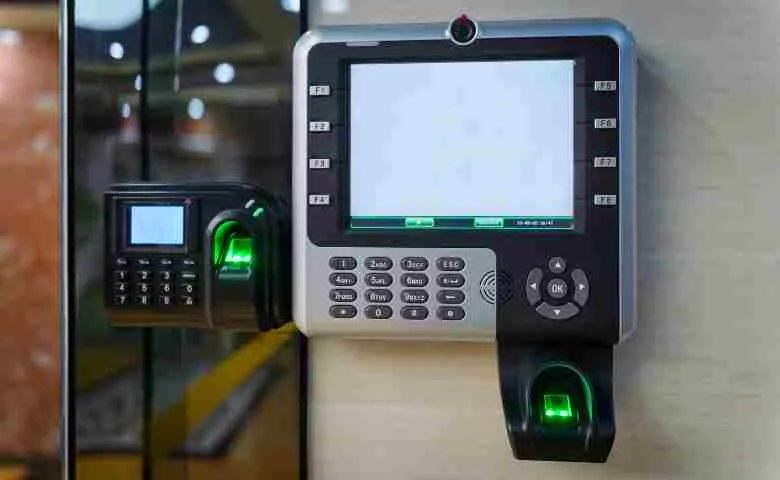Last Updated on April 4, 2024 by Admin
Protecting a building whether residential or commercial can present a variety of security challenges, not least of which is who can enter or exit the property at any given time. Solid access control protects employees or residents, prevents theft, and helps in securing sensitive data and stored information. Employing an access control system increases the protection of people, equipment and assets, and information.
The concept of access control is not new and has been around for hundreds if not thousands of years. Doors were invented to permit or prevent access. Locks and keys were created for the same reason. Regulating who can enter the premises, utilize equipment, or access resources is an important tool in overall security strategies. With the advancement of technology and the move toward digitalization, security tools including access control have also evolved to include smart technology drastically improving security methods and the overall convenience of managing security strategies.
The purpose of access control is to identify, authenticate, authorize, and account for who is in a building at any one time.
Access Control Systems
Many types of access control systems range from a traditional lock and key to keyless electronic cards or fobs, codes, passwords, or biometrics such as facial recognition or fingerprints. Newer systems maintain logs of who enters and who exits with video recordings stored on the cloud and accessed remotely. These systems also can restrict access to a specific area in a building or to a specific group of people. Newer systems allow you to manage your building’s access control using a single interface regardless of where you are if you have a device and an internet connection.
Access control is no longer only about monitoring or restricting who can access your property. Modern access control increases management convenience and can be much more cost-effective reducing the need for security personnel at building entrances. Building security increases because you decide who can enter, where they can go, and when and what they can access within your property.
Increasing Access Security
Apart from the convenience of managing access remotely, and the cost-effectiveness of a control system that reduces the need for security personnel at entrances, these digital systems improve building and property security.
An access control system elevates building security simply because it affords you control over who can enter your building and when they can enter it. This alone can impede property and equipment theft, package theft, burglaries, and vandalism, and increase the safety of the people in the building by keeping bad actors out, all the while protecting expensive equipment and stored sensitive information within.
The restriction of access to offices, IT servers, documents, and data is guaranteed. Areas with expensive equipment, narcotics, or hazardous chemicals can be secured with restricted access. Any area within a building that requires a controlled environment will benefit from the increased security that access control systems provide.
If your building experiences heavy traffic flow, access control systems can help you manage crowds with the integration of access control equipment such as gates or newer systems such as turnstile door access control and video security monitoring, so you’ll have a record of each entry and exit which can prove crucial as investigative tools should a need arise.
Reducing Risks
Anyone with a set of keys knows how easy it is to lose or misplace them. Or your keys may have been stolen with a purse or briefcase. This often results in the need to change locks, make key copies, and redistribute keys to anyone needing access.
When access control systems are digital, it makes no difference if you use codes, key cards, or digital access credentials. All of these can easily be revoked within seconds and removed from the system with a click so that there are very limited to no risks in the event of loss or theft. Issuing a new card or digital credential is easier, more immediate, and less expensive, and locks do not require replacement.
Other risk reductions involve emergencies. In the event of a fire, areas within the building can be isolated and locked down with immediate access afforded to first emergency responders and firefighters. Traditional locks may trap people in a specific area of the building, while electronic access control systems can interrupt the power supply to eliminate the risk of entrapment.
Should someone gain entrance to a building with the intent of harming occupants through violence, specific areas can be immediately locked down while local authorities are alerted, protecting the lives of those inside.
In Conclusion
With new technological access control systems, buildings have never been more secure or safer for those inside. The risks of unauthorized intruders are diminished if not eliminated and access for authorized employees or guests has become easier and more convenient.
These systems allow you to control all access, protect building areas or valuable assets, reduce theft, prevent data breaches, and increase the feeling of safety for those working or residing within your building.
Related Posts:
- Six Effective Ways to Prevent Theft from Construction Sites (and What to Do if Items are Stolen)
- How Can You Prevent Package Theft This 2023?
- Smart Home Systems: What You Need To Know
- Project Controls Engineer Job Description and Salary Details


